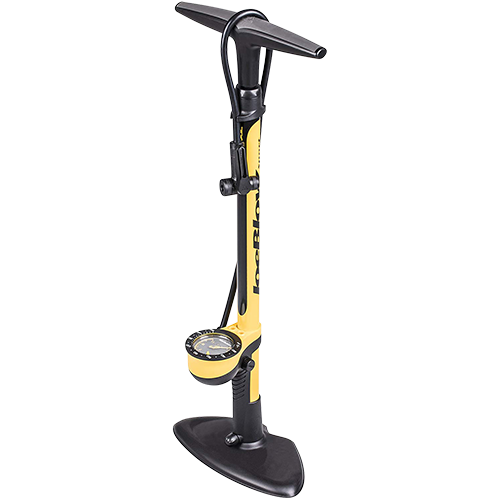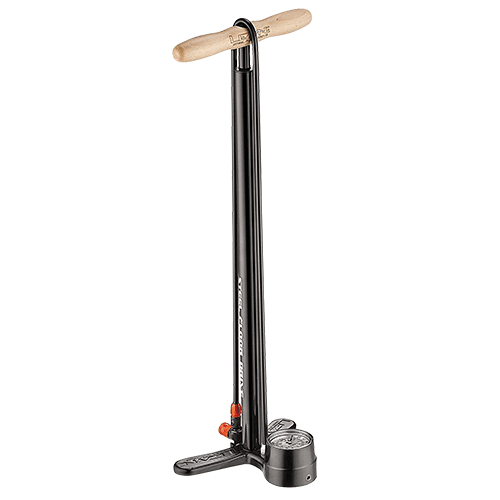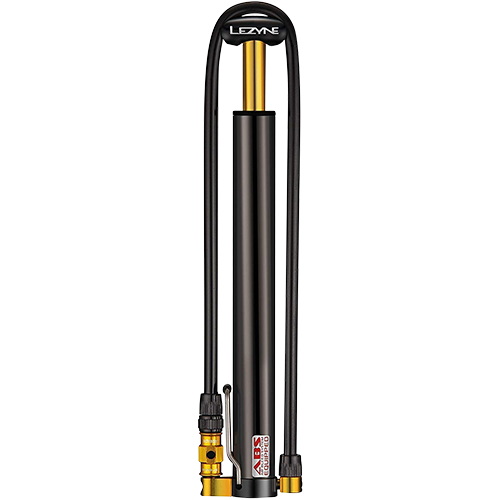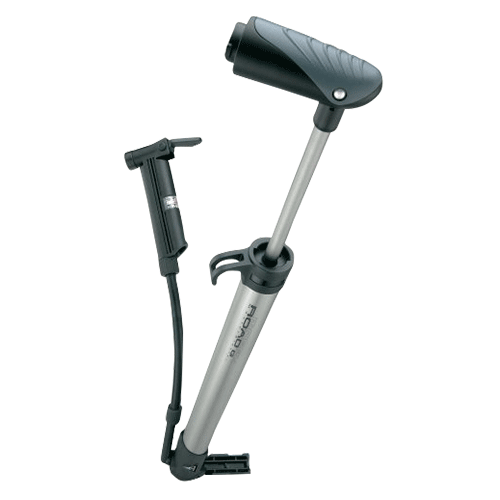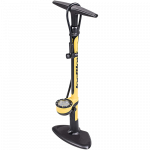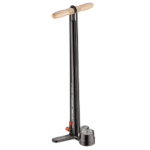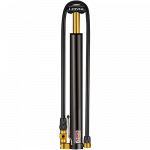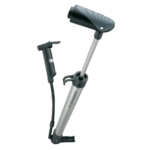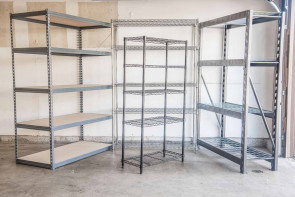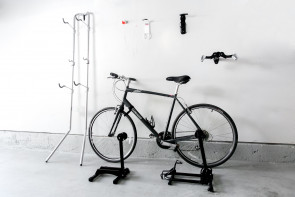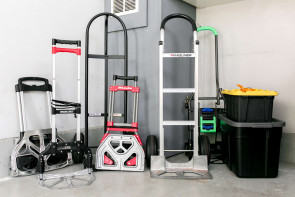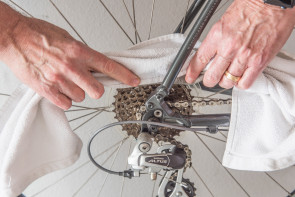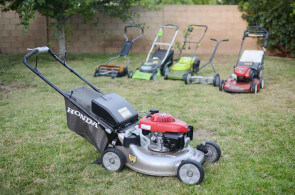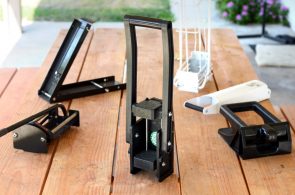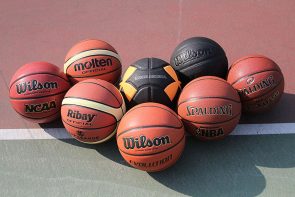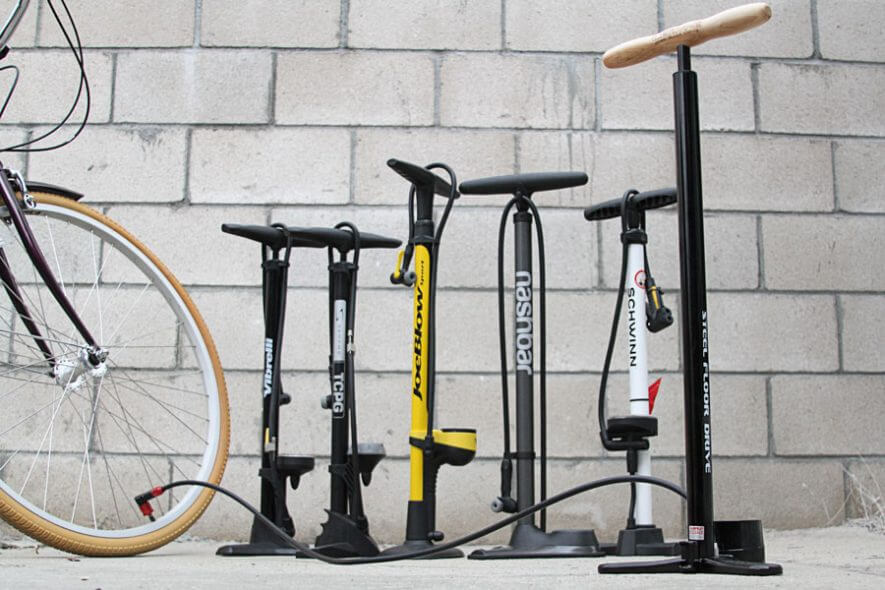
The 11 Best Bike Pumps
After learning that two of our top picks were discontinued, we tested new bike pumps and a CO2 injector. We’ve selected the Topeak – Joe Blow Sport III as the best floor bike pump. It has a dual head for Presta and Schrader valves that attaches and detaches in a snap, a large easy-to-read gauge, and a smooth, effortless pump. Another floor pump that’s worth your consideration is the Lezyne – Steel Floor Drive. For the best mini bike pump we chose the sleek and stylish Lezyne – Micro Floor Drive that’s lightweight, easy to attach, and easy to use. Another great mini pump is the Topeak – Road Morph G.
After learning that two of our top picks were discontinued, we tested new bike pumps and a CO2 injector. We’ve selected the Topeak – Joe Blow Sport III as the best floor bike pump. It has a dual head for Presta and Schrader valves that attaches and detaches in a snap, a large easy-to-read gauge, and a smooth, effortless pump. Another floor pump that’s worth your consideration is the Lezyne – Steel Floor Drive. For the best mini bike pump we chose the sleek and stylish Lezyne – Micro Floor Drive that’s lightweight, easy to attach, and easy to use. Another great mini pump is the Topeak – Road Morph G.
Table of contents
- The 11 bike pumps we tested
- Best floor pump: Topeak – Joe Blow Sport III
- Also great: Lezyne – Steel Floor Drive
- Best mini pump: Lezyne – Micro Floor Drive
- Also great: Topeak – Road Morph G
- Pro Bike Tools – CO2 Injector
- Other products we tested
- How we selected
- How we tested
- Floor pumps vs. mini pumps
- Important features to consider
- The bottom line
(Editor’s note: In 2020 we learned that our two top picks — Nashbar – Earl Grey and the Lechi Mini Bike Pump — have recently been discontinued. In this update, we tested new contenders for floor pumps and mini pumps. See our new reviews below.)
The 11 bike pumps we tested
Floor pumps
| Product | Price | Height | Hose Length | # Pumps to 80 PSI |
|---|---|---|---|---|
| Topeak - Joe Blow III | $$$ | 27" | 27" | 31 |
| Lezyne - Steel Floor Drive | $$$ | 25" | 48" | 37 |
| AerGun X-1000 | $$ | 24" | 30" | 36 |
| Vibrelli - Performance | $$ | 24.5" | 37" | 52 |
| Schwinn 5-in-1 | $ | 25" | 28" | 41 |
| BV Floor Pump | $ | 24" | 30" | 38 |
| Serfas TCPG (Discontinued) | $$ | 23" | 36" | 53 |
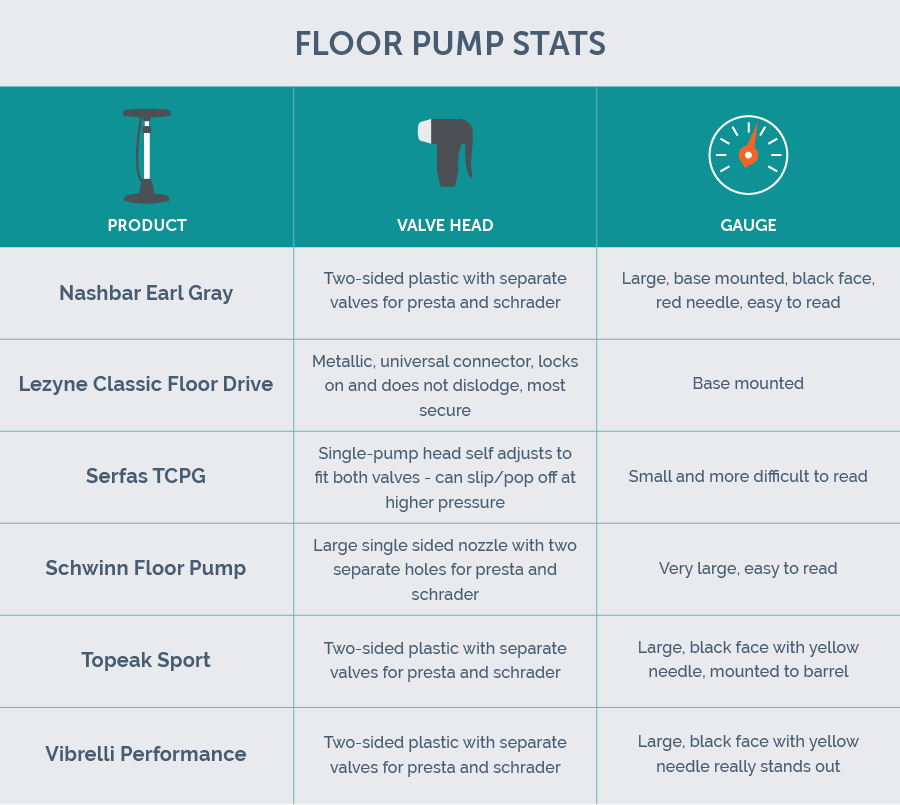
Mini pumps
| Product | Price | Height | Hose Length | Max PSI | # Pump to Max PSI | |
|---|---|---|---|---|---|---|
| Lezyne - Micro Floor Drive | $$$ | 11" | 23" | 90 | 140 | |
| Topeak - Road Morph G | $$ | 13.5" | 10" | 80 | 120 | |
| Pro Bike Tool | $$ | 9" | 6" | 50 | 150 | |
| Vibrelli Mini | $$ | 7.5" | None | 30 | 180 | |
| EyzOff - GP96 | $ | 8.5" | None | 30 | 200 |
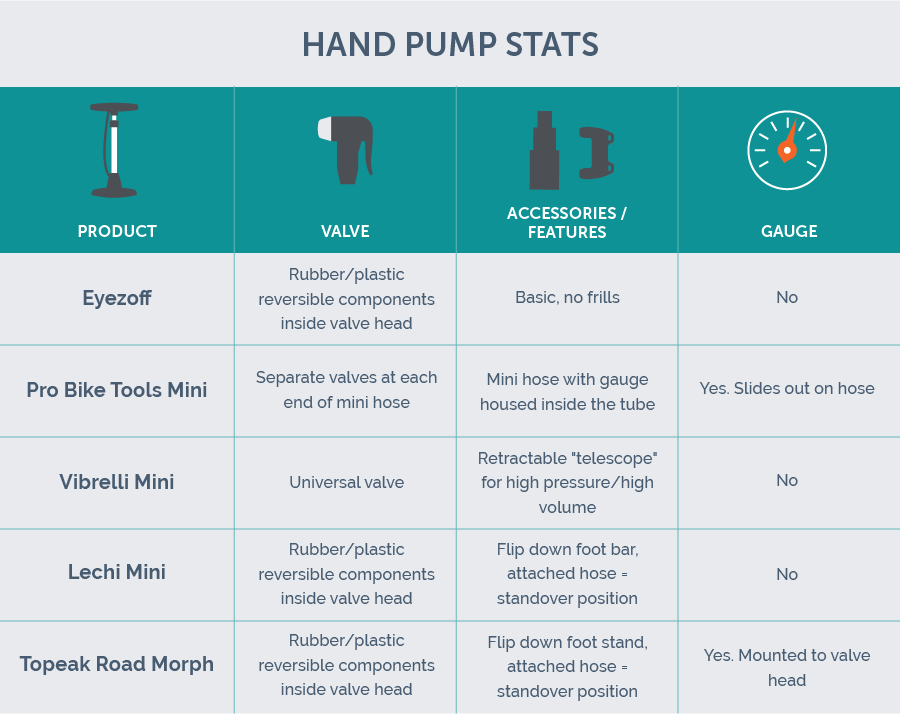
Best floor pump: Topeak – Joe Blow III
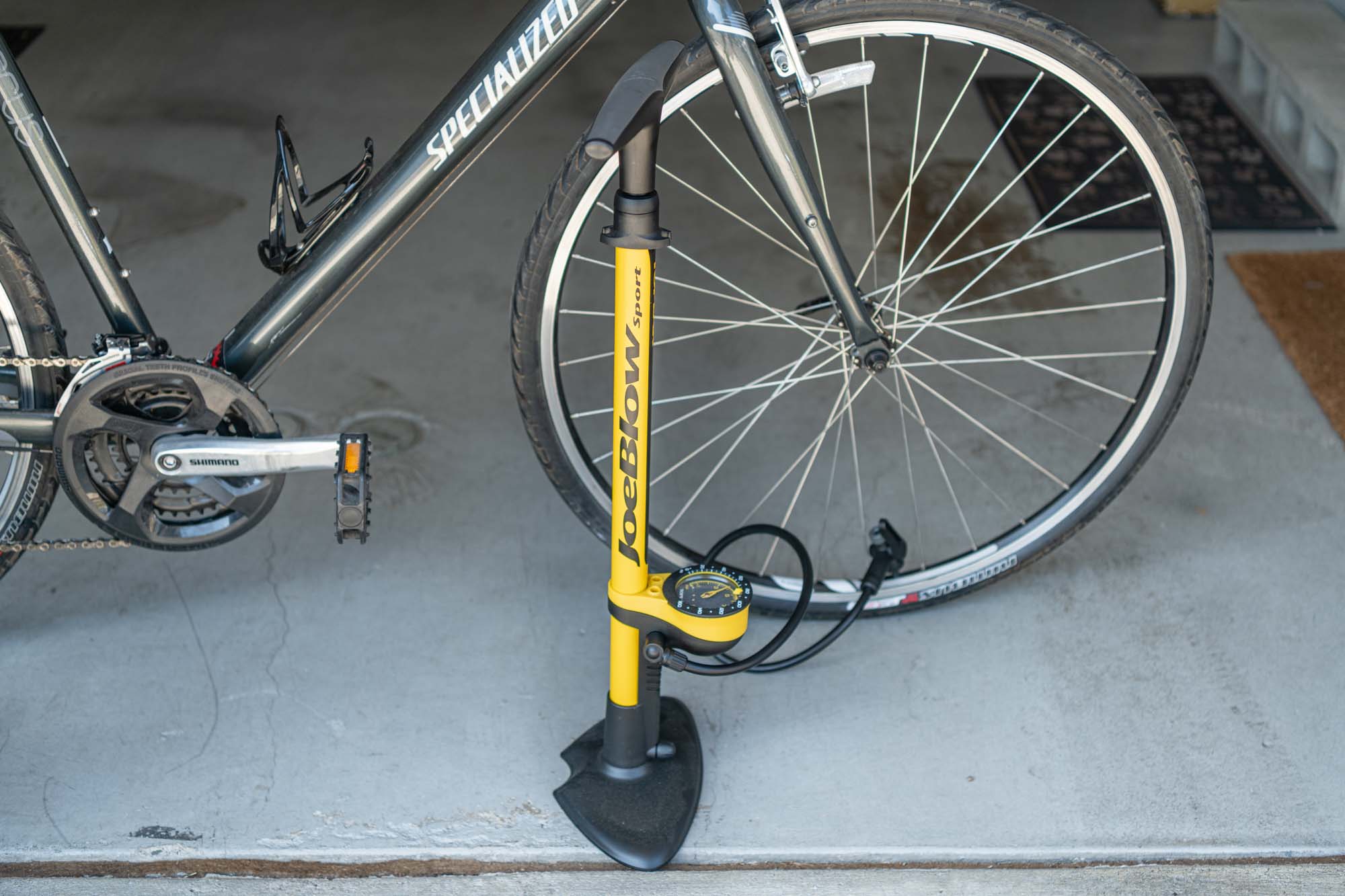
In our earlier review, we tested Topeak’s previous model and were not impressed by its plastic components and small, hard-to-read gauge. Topeak has solved those problems with its much-improved Topeak – Joe Blow Sport III, which we’ve selected as the new winner for best floor pump. The Joe Blow III has almost no plastic components, and the 3-inch gauge is considerably larger and much easier to read than it was in the previous model.
It has a twin-valve head for accommodating either Presta or Schrader valves that connects easily and secures onto the tire valve with the flip of a lever. The Joe Blow III is 27-inches tall, making it the tallest of all of the pumps we tested, and has a 27-inch hose, which is slightly shorter than other pumps, but we had no problems reaching the tire from any angle, thanks to its 360-degree rotating connector.
The Joe Blow III’s barrel is aluminum, its base is steel and its 10-inch-wide handle is made of double thick polymer that’s been padded for a comfortable grip. The Joe Blow III performed almost identically to our former top pick, the Lezyne – Sport Floor Drive, but it hit 80 PSI in a completely flat tire in only 31 pumps, by far the fastest of any pump we’ve tested before and for this update.
The Joe Blow III and the Lezyne – Sport Floor Drive are the same price, and although we still recommend the Lezyne, it’s often out of stock on Amazon. These are both great pumps, but if you’re looking to purchase one now, it’s likely that you’ll find the Joe Blow III more available.
Key takeaways:
- The Topeak – Joe Blow Sport III is an improved updated model that’s made of aluminum and steel. Its dual gauge head easily and securely fits Presta and Schrader valves.
- Its larger 3-inch gauge is clearly marked and easy to read.
- The Joe Blow III hit 80 PSI in only 31 pumps with almost no resistance.
Also great: Lezyne – Steel Floor Drive
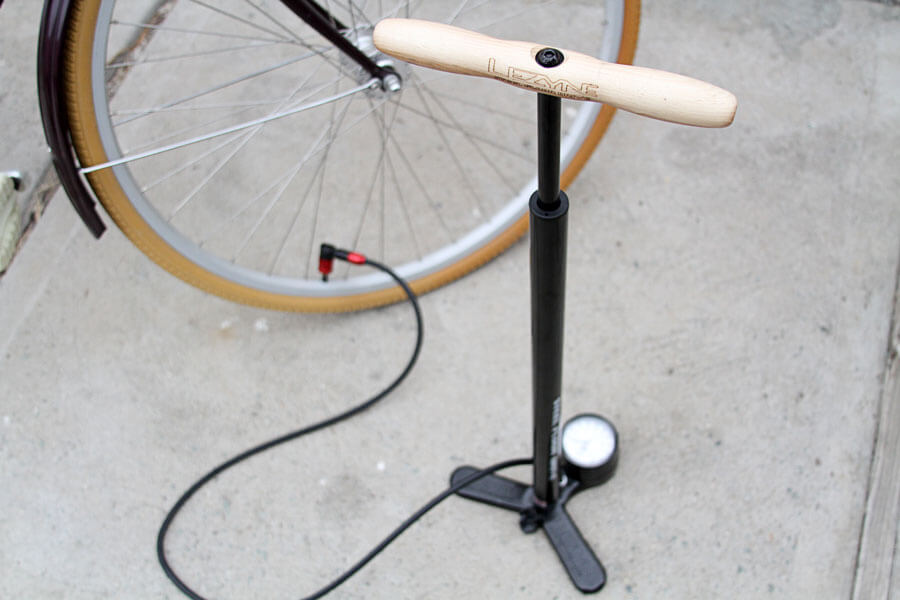
The Lezyne – Steel Floor Drive‘s unique valve attachment screws to lock onto both Presta- and Schrader-style valves. While nearly all the other models we tested rely on two separate holes and a sometimes clumsy toggle switch, the Lezyne valve firmly fits both types with a smaller, tighter component. Once fastened, the head of the pump cannot be dislodged from the tire.
The pump is 25.5 inches tall and at 48 inches, its hose is the longest of all the pumps we tested. Connected to the base, it can pivot a full 360 degrees, which helps make the valve connection incredibly easy.
It reaches 80 PSI on a standard Presta valve road tube in 37 pumps, and because its barrel is made of steel, the Lezyne can handle higher pressure, with a maximum of 220 PSI. Other floor pumps we tested maxed out at 160 PSI.
While most cyclists will never need to hit PSIs above 140, the higher capacity makes reaching lower PSIs much easier. When pumping even to 120 PSI, there was barely a perceptible resistance in pumping, unlike our other finalists, which required more effort after 80 PSI.
Finally, the Lezyne – Steel Floor Drive looks and feels great. The polished black steel is sharp and sleek. The base is properly weighted and sturdy. The engraved wooden handle is unique and feels smooth in your hands.
Key takeaways:
- The Lezyne Steel Floor Drive’s unique screw valve attachment creates the easiest and most secure connection.
- Steel components provide impressive strength and durability with the highest PSI capacity.
- Its polished black surfaces and wooden handle look and feel great.
Best mini: Lezyne – Micro Floor Drive
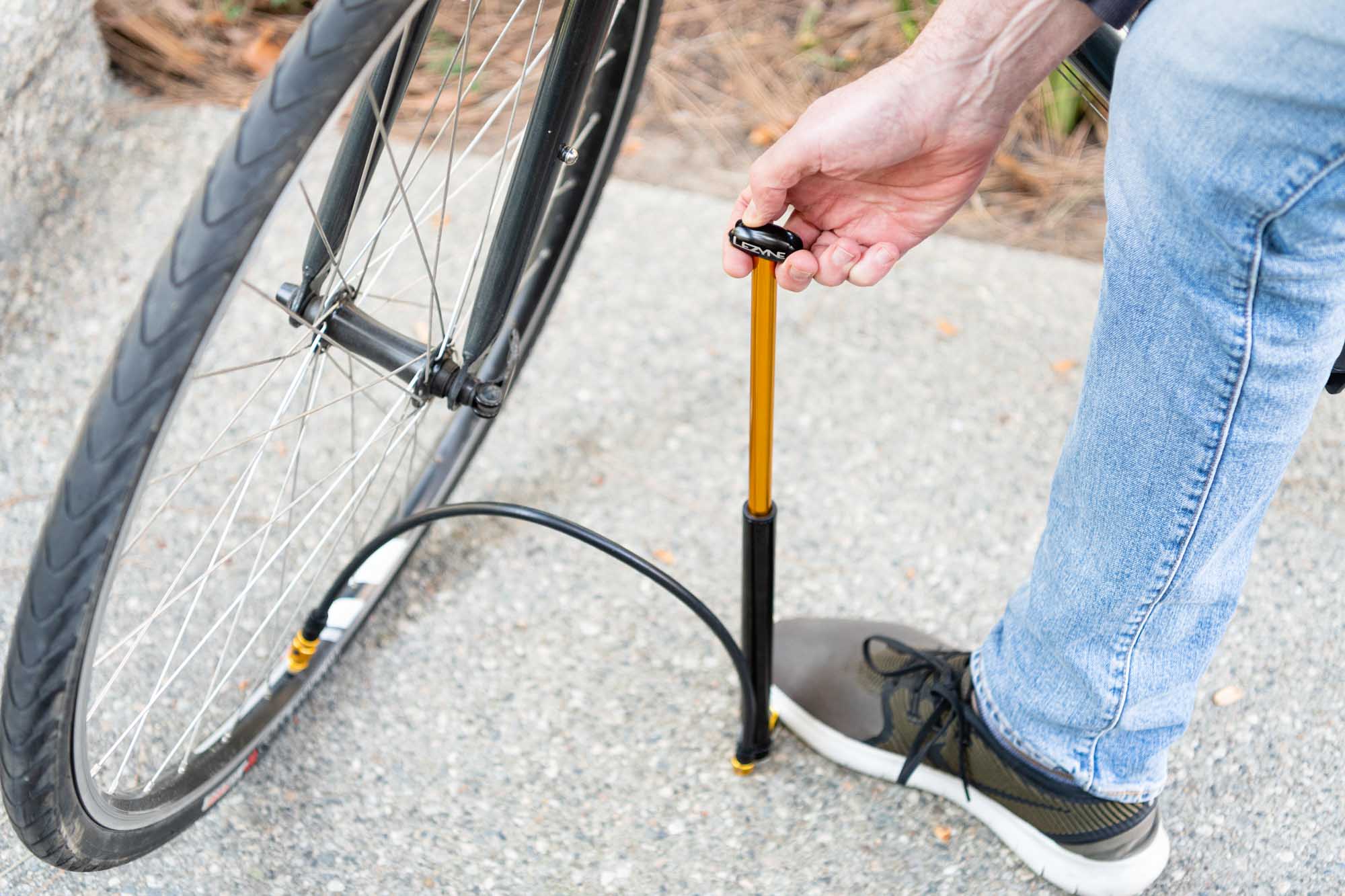
The Lezyne – Micro Floor Drive’s ingenious ABS Flip Thread Chuck, which allows you to switch from Presta to Schrader valves by simply flipping it over, is our new top pick for best mini pump. This little device has two threaded sides — one for Presta, the other for Schrader — that screw into the tire valve, and the chuck is then screwed into the hose connector.
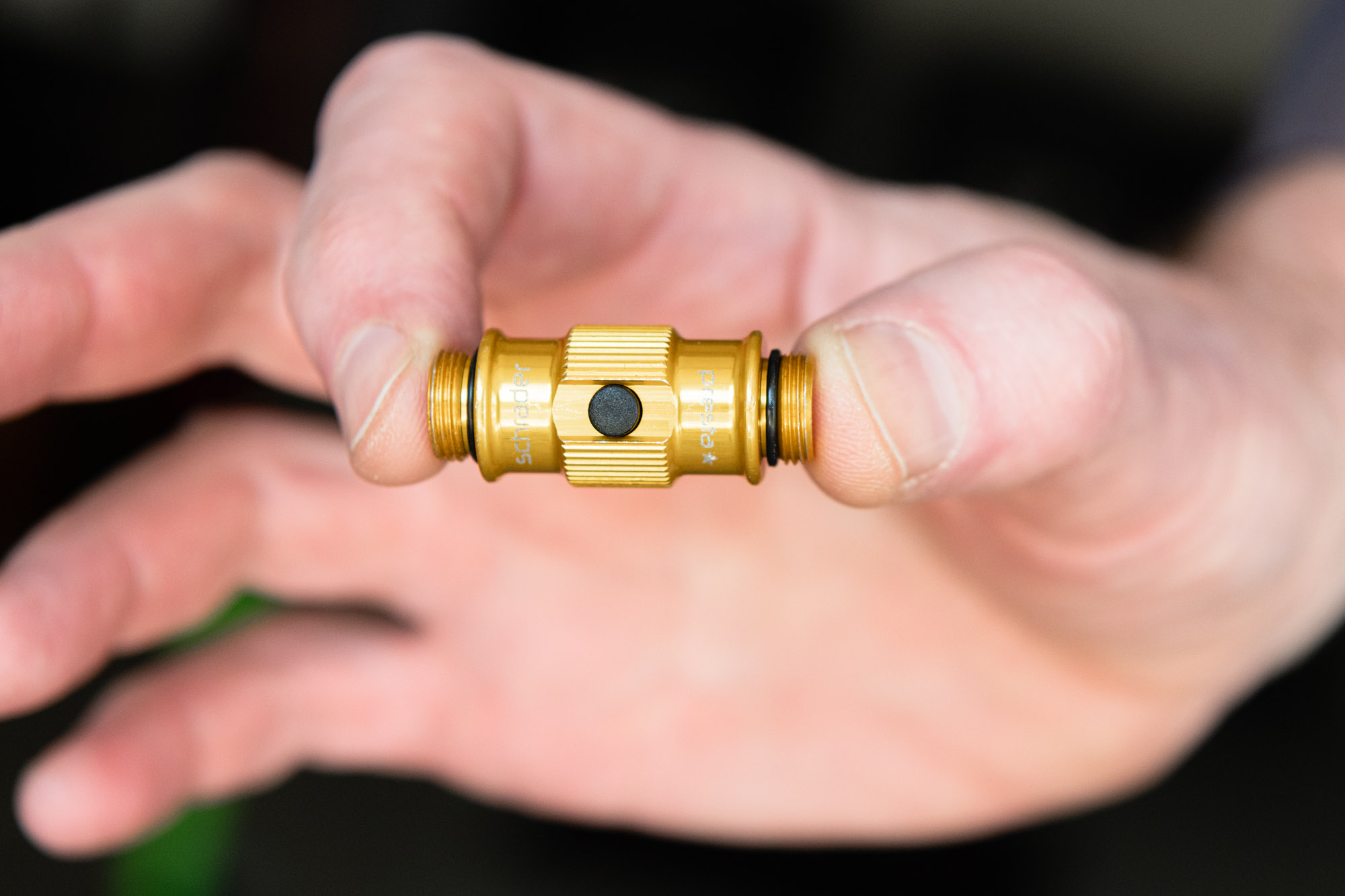
Lezyne’s ABS (air bleed system) has a small button in the middle of the chuck that can be pressed to release pressure. Not only is the connection secure and slip-free, the Micro Floor Drive was also the easiest pump to attach to a tire valve.
Since we last reviewed the full-size Lezyne – Sport Floor Drive, the company has introduced a new ABS2 chuck that eliminates the need for threading it onto the tire valve. In our opinion, this design upgrade should be adopted by all bike-pump manufacturers since it makes tire inflation a breeze.
The Micro Floor Drive is made of lightweight aluminum and can be tossed in a bag or mounted on your bike’s frame with the included mounting bracket. It’s 11 inches with a 23-inch hose — unheard of in a mini pump — that’s designed to wrap over the handle and down the sides of the pump. It has a 2.5-inch stainless-steel kickstand that flips down, so the Micro Floor Drive can operate like a miniature floor pump.
The Micro Floor Drive has a 90 PSI maximum, and we were able to achieve 80 PSI in 150 pumps, which sounds like a lot, but we inflated a flat tire effortlessly in less than 5 minutes. The pump we tested did not have a pressure gauge, so we used a separate gauge to check the PSI; a model with a gauge is available, but it’s $30 more. If there’s anything we did not like about the Micro Floor Drive is that it’s more expensive than other similar mini pumps, especially if you buy the model with the pressure gauge.
That said, like all Lezyne products, it’s an exceptionally well-made mini pump, and you would be investing in one of the best that’s clearly been designed to last for years.
Key takeaways:
- The Lezyne – Micro Floor Drive’s ABS flip chuck for both Presta and Schrader valves makes this mini pump the easiest to securely attach to a tire valve.
- It can reach a maximum of 90 PSI effortlessly.
- The model with the pressure gauge is more expensive than other mini pumps.
Also great: Topeak – Road Morph G
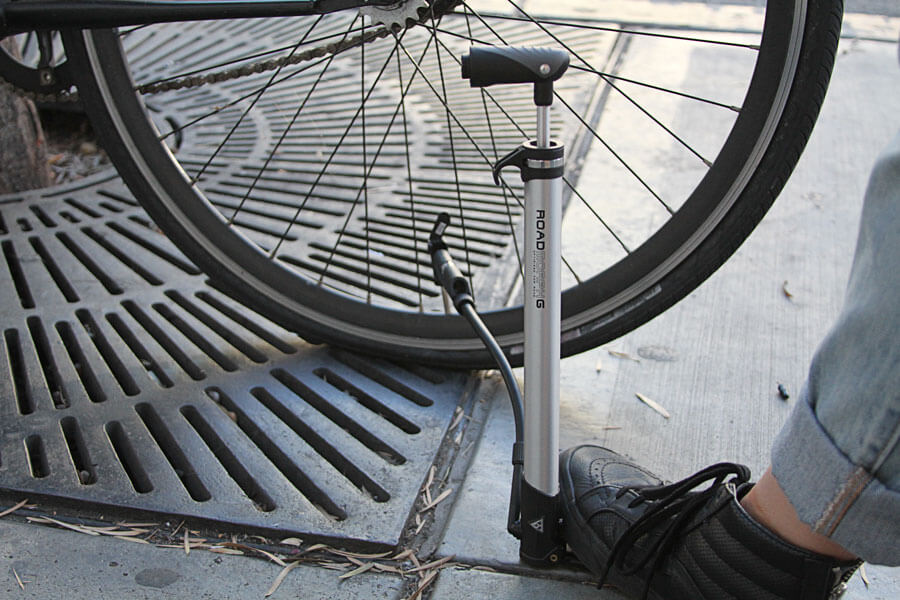
The Topeak Road Morph G has unique features for a hand-held, mini bike pump including a pressure gauge, flip-down foot stand and a hose-attached valve head. These components clearly distinguish it from other top portable bike pumps.
Most mini bike pumps have a valve connection directly on the end of one side of the tube. The Road Morph, on the other hand, has a small attached hose that spins 360 degrees at the connection point, making it very easy to securely lock onto the tire.
Traditional mini pumps require holding the two ends of the pump in either hand, using forearm muscles to open and collapse the tube upwards of 200 times. The Road Morph allows you to use the leverage of your body weight and gravity, standing over the pump and pushing down on the handle in the same fashion as a floor pump.
While it was nearly impossible to achieve a PSI higher than 30 with many of the mini pumps, the design of the Road Morph makes reaching a PSI higher than 60 relatively easy for most users. This is aided not just by the stand-over design but by the size of the pump itself. At 13.5 inches, it is the largest in the category, making it easier to use but a bit more difficult to transport.
The valve head at the end of the hose features a small pressure gauge, unlike most mini pumps. The ability to get an accurate PSI reading gives the rider confidence that the tire is properly inflated.
The Road Morph’s handle rotates 90 degrees, allowing for an overhand grip that is stronger and more comfortable than being forced into a parallel grip.
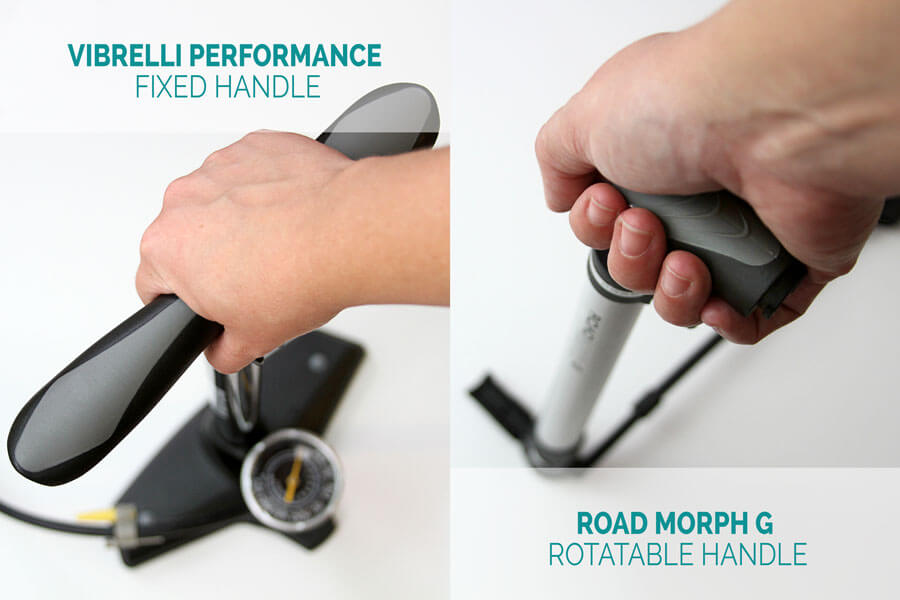
The connection valve is not our favorite in the mini pump category, but it is easy enough to get accustomed to after a couple uses. By unscrewing a large plastic washer at the opening, you release a plastic part with a stem designed for the Schrader valve and a rubber ring designed to fit over the Presta valve.
By rearranging the parts, choosing which one faces out and then resealing with the plastic washer, you can accommodate either valve type.
Key takeaways:
- A flip-down foot stand and longer tube length, combined with the stand-over design, make the Topeak Road Morph G Mini Pump by far the easiest mini bike pump to use.
- While pumping, the user experiences less resistance, allowing for proper inflation above 60 PSI.
- The inclusion of a gauge lets you know exactly when you’ve reached you optimal level of pressure.
Pro Bike Tools – CO2 inflator
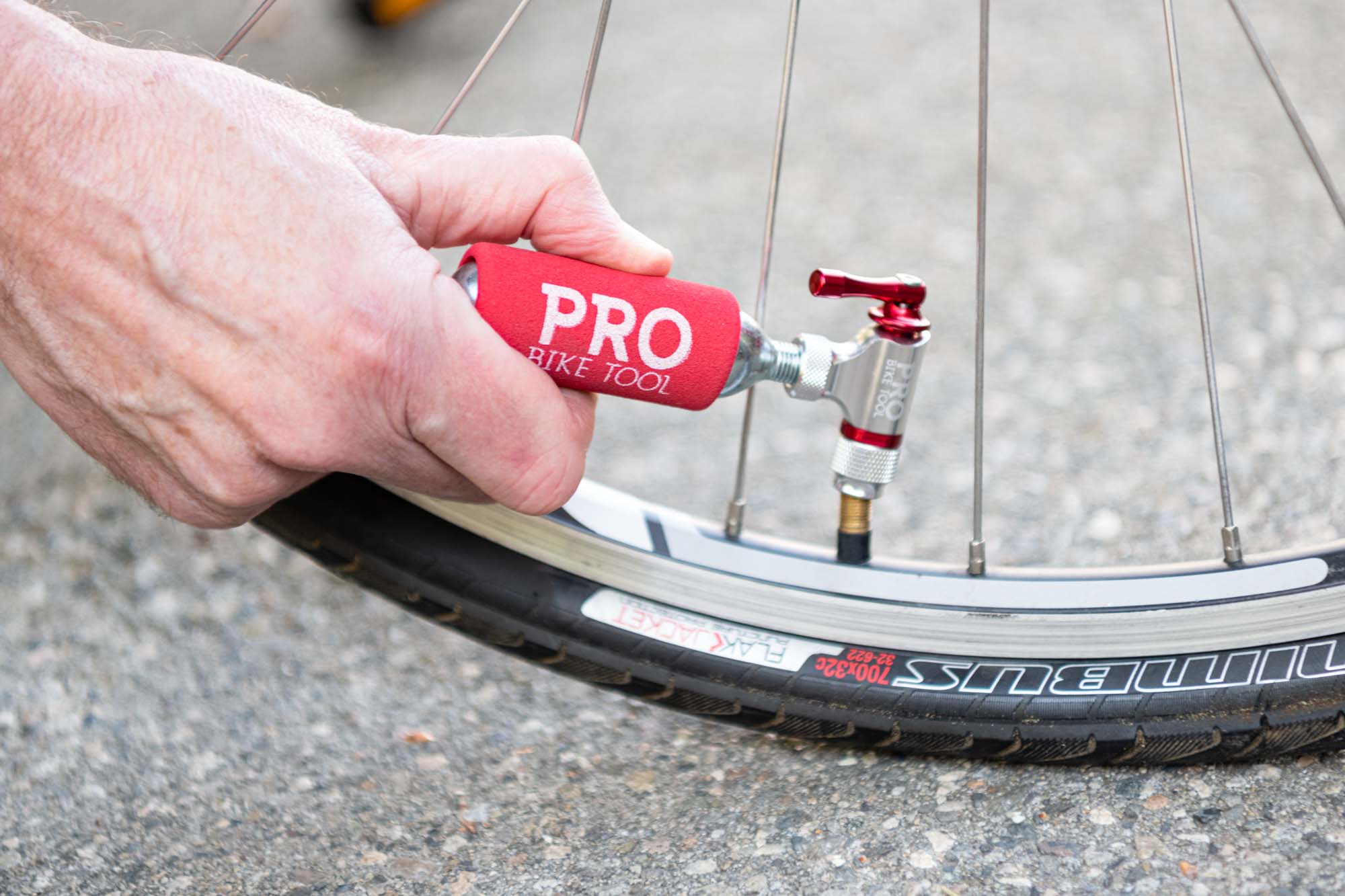
The dreaded flat tire can happen anywhere, and you may have forgotten your mini pump, or it can’t fit in your bag or on your bike. A CO2 inflator and a patch kit will get you out of that stressful situation in a jiffy. We tested the Pro Bike Tools – CO2 Inflator, and it could not possibly be easier to reinflate a flat tire.
The Pro Bike Tools inflator is a 2-inch-long gun head with a universal valve that fits Presta and Schrader. A threaded cartridge (sold separately) is screwed into the head, which is then secured onto the tire valve. Once the inflator is in place, a small flow-control lever at the back of the head releases the CO2 into the tire with a whoosh. In our test, the tire was inflated to 75 PSI in 2 seconds, which would be just enough pressure to get us wherever we were going.
When the CO2 is released, the cartridge gets icy cold, and the Pro Bike Tools inflator has a rubber foam sleeve that slides over the cartridge to protect your hand. (The cartridge is recyclable, so take it with you and dispose of it responsibly.)
We tested Pro Bike Tools’ 16g cartridges, which are intended for use with this inflator. If your tires need more pressure, Pro Bike Tools also sells 25g cartridges, but they won’t fit this particular inflator. Even if you already have a mini pump, this nifty little tool should be in every cyclist’s kit.
Other products we tested
It is important to note that all of the products we tested will reliably and successfully inflate your bicycle tires. But we investigated and discovered some features that improve the user experience and make durability more likely.
Pro Bike Tool – Mini
The Pro Bike Tool – Mini offers individual valve connections for Schrader and Presta valves, a sliding pressure gauge and a hose that detaches and fits inside the tube, all inside a compact package. Its 6-inch hose has a screw-on connection for either a Presta or Schrader valve. Its pressure gauge is located in the middle of the hose, and when air is added to the tire, it slowly slides open as its rendering the PSI reading.
The Pro Bike Tool Mini Bike Pump was very efficient, reaching 50 PSI in about 150 intervals. But at 150 PSI, the reliance on our arm strength was tiring and reaching pressures levels above 60 PSI required a considerable amount of effort.
If size and convenient transport are your main concerns, the Pro Bike Tool is an excellent choice. At just over six inches long, it can fit in almost any bag or purse and can be mounted to a bike frame even with a water bottle cage on the same bar.
AerGun X-1000
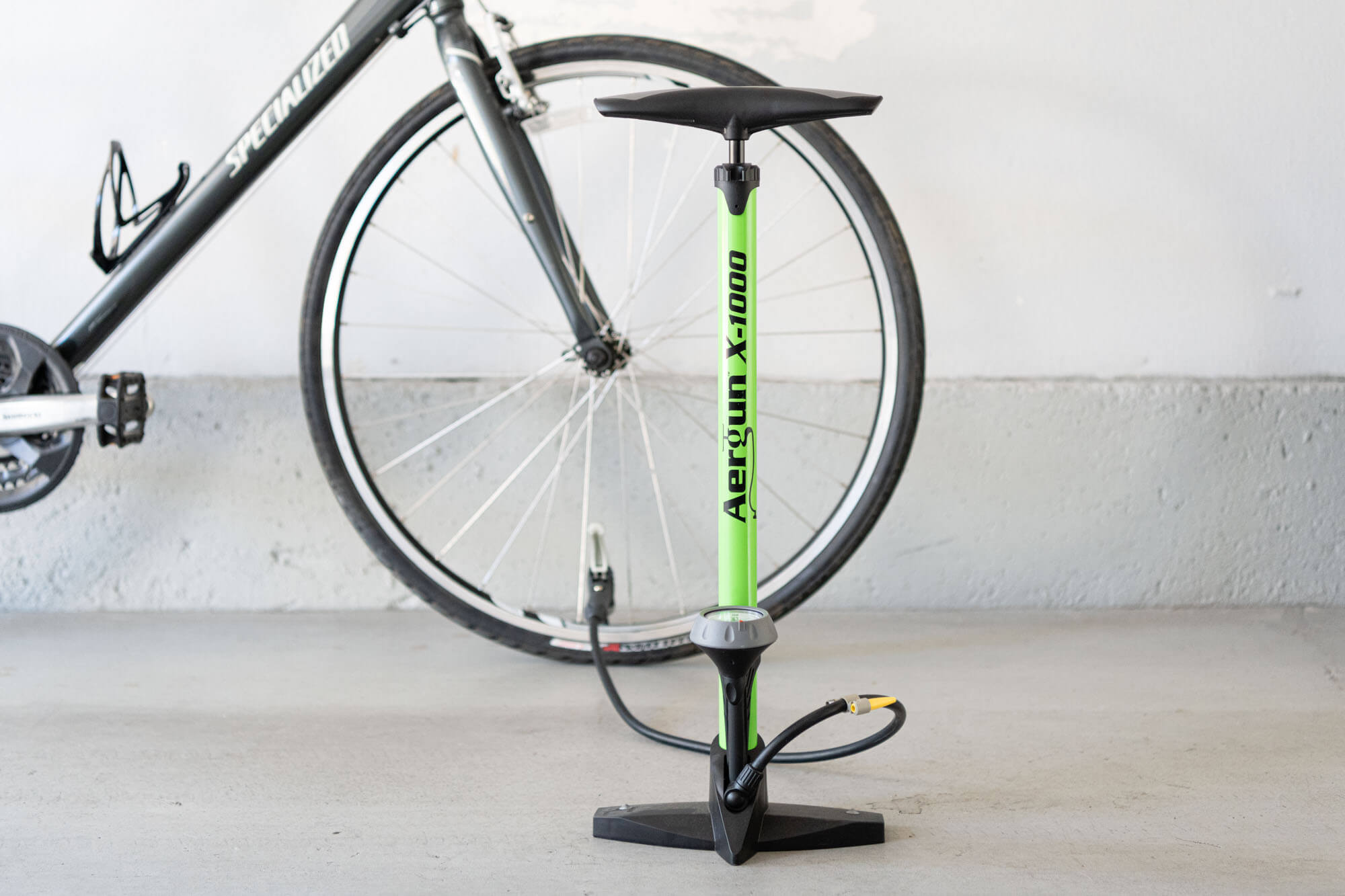
The AerGun X-1000 is a popular and well-priced floor pump that gets the job done. It has an aluminum cylinder and plastic base and handle, which will affect the pump’s long-term durability. The pressure gauge’s markings are small, squished together and difficult to read. The AerGun’s head, however, is a real stand-out. It’s a single, universal valve that fits Presta and Schrader, and it has the Lezyne ABS release button. Performance-wise, it inflated our tire to 80 PSI in 36 pumps, but it gave a lot of resistance at about the 30th pump.
BV Floor pump
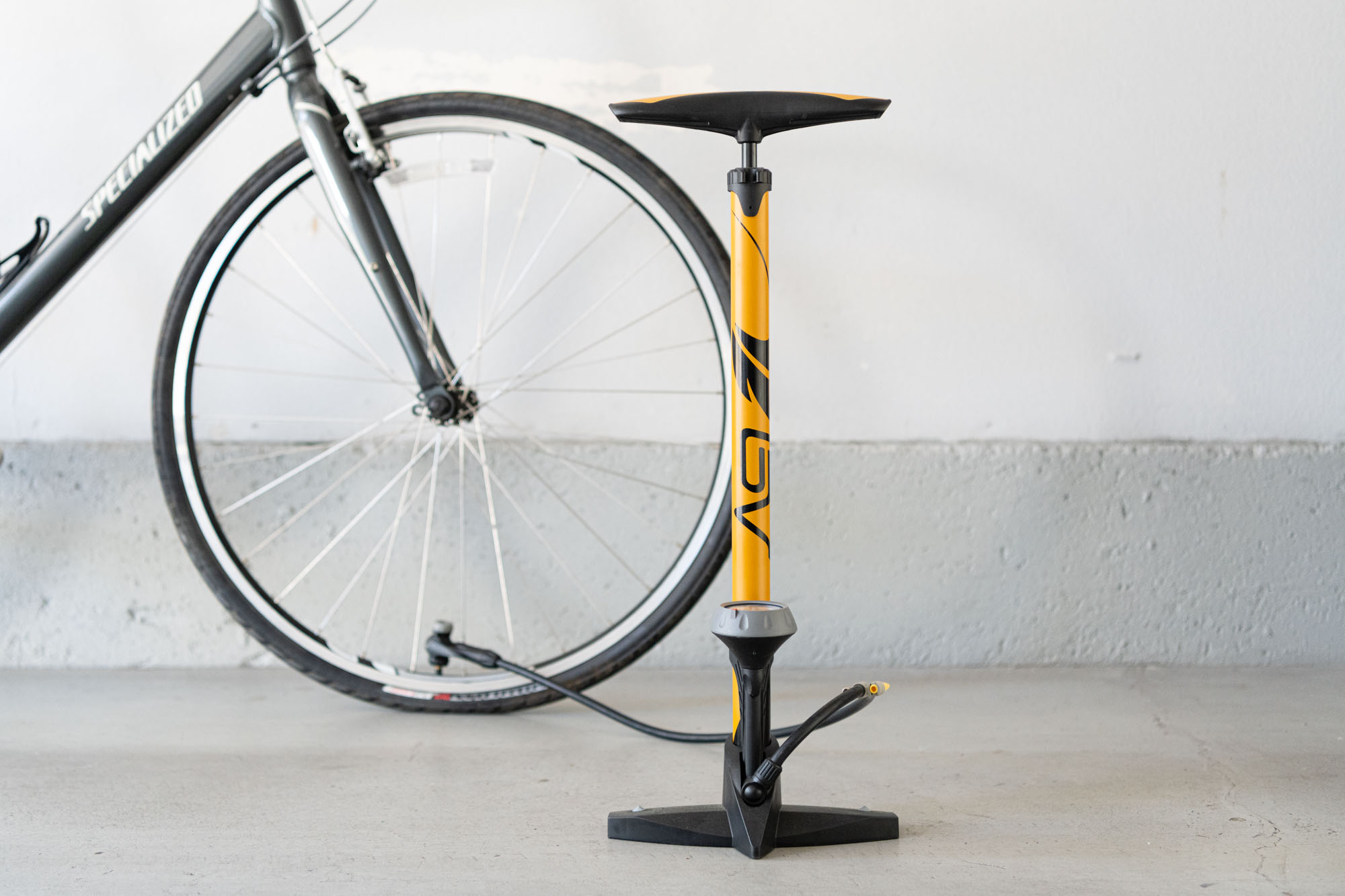
The BV Floor Pump looks identical to the AerGun. It also has an aluminum cylinder, plastic base and handle and a difficult-to-read gauge. It does not have the universal valve head, however, but a twin head instead, which alone contributed to our preference for the AerGun. It has the same dimensions as the AerGun, but the BV did not perform as well. It took us 38 pumps to hit 80 PSI, which certainly isn’t bad, but at about the 10th pump, resistance increased dramatically, and it was tiring to pump.
Vibrelli – Performance
The Vibrelli – Performance suffers from heavy use of plastic components that feel cheaper than others. The twin valve head is a bit clunky and prone to slipping off the connection. We like the black face gauge with a yellow needle that is large and easy to read. The handle, too, is well designed, tapered to be easily gripped by any size hand.
Schwinn – 5-in-1
We liked the Schwinn – 5-in-1 for its large gauge, mounted high on the tube itself instead of the base, which was easy to read. We also found the design of the valve head (both openings on the same side) sturdier and more substantial than the twin heads with connection points on opposite sides.
But we were unimpressed with the Schwinn floor pump’s hose length of just 28 inches, nearly half the length of the Lezyne hose. The short hose made it awkward to attach and maintain a secure connection to the tire during pumping.
Vibrelli – Mini
The Vibrelli – Mini has a couple of unique features for a hand-held pump. First, a universal valve eliminates the need for fumbling with the small reversible parts that most mini pump valve systems utilize. It’s a great innovation at lower pressure, but the valve repeatedly slipped or popped off the tire as the pressure increased.
The Vibrelli Mini also advertises a secondary telescope, a smaller tube inside the main tube that allows you to increase the volume of air with each pump, ideal for the early stages of pumping. Then, as the resistance increases, you retract the inner tube and the motion becomes shorter, better adapted to adding higher pressure above 60 PSI.
We really liked the collapsible telescope, and it made reaching higher PSI levels easier. We were frustrated, however, by the small pump and handle, which pinched our hands when we were trying to secure a connection.
EyezOff – GP96
The EyezOff – GP96 Alloy Mini Pump is a good option if all you need is a basic, functional portable pump. At around $11, it’s about half the price of any other finalist in the mini pump category. It gets the job done with no frills, but it is very difficult to reach a PSI of 20, and the valve connection leaks somewhat with the Presta connection.
Serfas – TCPG (Discontinued)
The Serfas – TCPG has a unique universal valve mechanism that connects to both Presta and Schrader valves. While not as secure as the Lezyne’s screw system, the locking lever on the Serfas is definitely a close second, stronger than the other floor models we tested.
The slide of the pump is super smooth, but the size of the Serfas makes the repeated action of pumping uncomfortable for taller users. At 23 inches, it is the smallest floor pump to make our finalists, which also means it took the longest to reach full inflation. Fifty-three pumps are more than 10 pumps over any other product we tested and 16 more than our favorite.
How we selected
If you own a bike, you need a bike pump. Properly inflated tires not only make your ride through the neighborhood or down a mountain smoother and faster, they’re also critical for riding safely. Bike tires are more vulnerable when they’re under-inflated, and the more you ride, the more air pressure slowly escapes from your tires. Even if you don’t ride often, the air in your tires will seep out while your bike waits for you in the garage.
Having a strong base of knowledge from years of city cycling, we’ve reviewed must-have items for every cyclist, like bike helmets and indoor bike racks. However, we learned in 2020 that our two favorite bike pumps have been discontinued, so we searched for the latest models and tested four. Our new research brought to light that many cyclists prefer a CO2 inflator over a mini pump, so we added the Pro Bike Tool CO2 Inflator to our list of products to test.
How we tested
Measurements
We first differentiated our finalists with a simple measurement, comparing each pump’s height and hose length. Taller pumps require less bending down and thus reduce strain on the back. Longer hoses simply make it easier to connect the pump to the valve regardless of the tire position.
Not all mini pumps have hoses, but we also noted their lengths and components.
Build quality
While the air pressure increases inside your tire, it also increases inside the components of the pump. To stand up to the stress of years of use, these components must be strong and durable. Steel and aluminum will hold up better than parts made of plastic.
While our testing lasted a couple of weeks and not a couple of decades, we needed to get a pretty quick feel for how well the products will age. The quality of the materials and the construction was evident after having pumped several dozen tires and subjecting our finalists to a bit of common abuse.
Speed and pressure
While inflating a tire is not necessarily a speed sport, if you can do it quicker and with less effort that’s a plus. For our floor pumps, we recorded the number of full pumps it took to achieve 80 PSI.
It becomes increasingly difficult to add air to a tube as the pressure builds when using a mini pump. Therefore, we compared the PSI levels at the moment that the resistance of the pressure halted our ability to continue pumping.
The kickback from the pressure is so great that forcing more air into the tire just becomes impossible. We also compared how many pumps were required to reach those points.
User experience
At the end of the day, the overall ease of operating each pump is really what differentiates one from another. The way the handle fits and feels in your hand; the intuitiveness and security of the valve connection; the smooth glide of the pumping motion; the level of resistance you must work against as you force air into the tire — all these factors define what it’s like to use each pump.
Floor pumps vs. mini pumps
Floor pumps
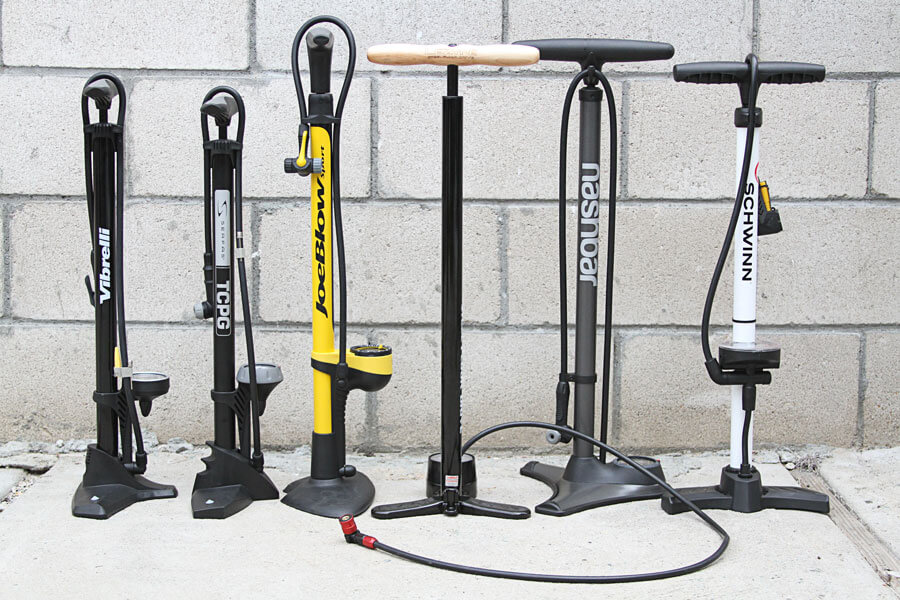
While styles vary slightly, floor pumps all work the same way. With the base on the floor, the rider uses gravity and leverage to push air into the tire while standing over the pump and pressing down on the handle. As the tire inflates, resistance builds, and it becomes more difficult to add air to your desired pressure. But the leverage from standing up and using your body weight to push down makes it relatively easy to achieve full inflation.
Mini pumps
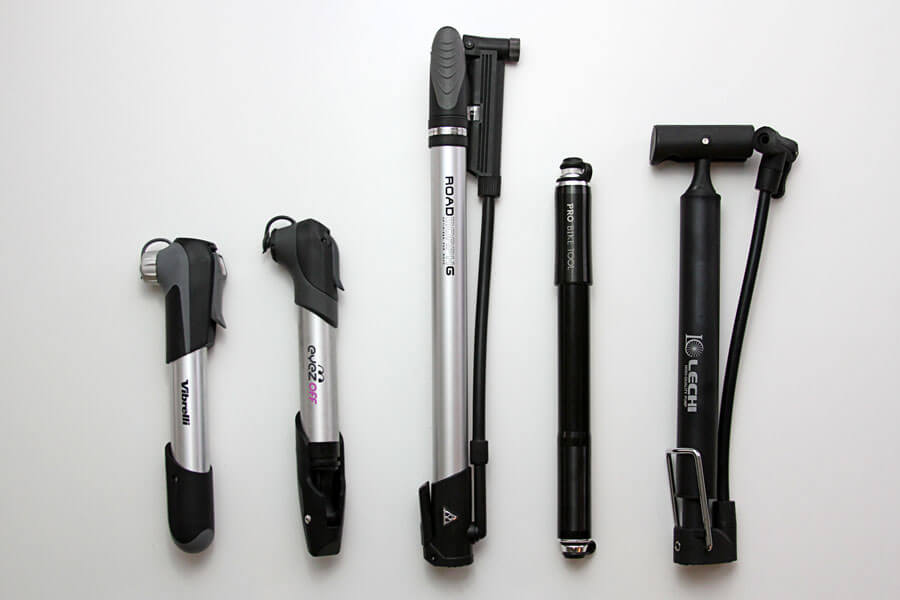
Handheld mini pumps can be brought along on rides to help you mend tires that may lose air or fill a new tube when one is punctured. Most measure about an inch in diameter and a foot long and easily fit inside a bag or mounted onto the bike’s frame.
It’s difficult to achieve full tire inflation with a mini pump as the pressure increases. Without having the benefit of using your body weight, filling a tube with a mini pump can be a pretty intense workout for the forearms. In fact, many riders will find it nearly impossible to reach the optimal PSI level with a hand pump alone.
Important features to consider
Schrader valves vs. Presta valves
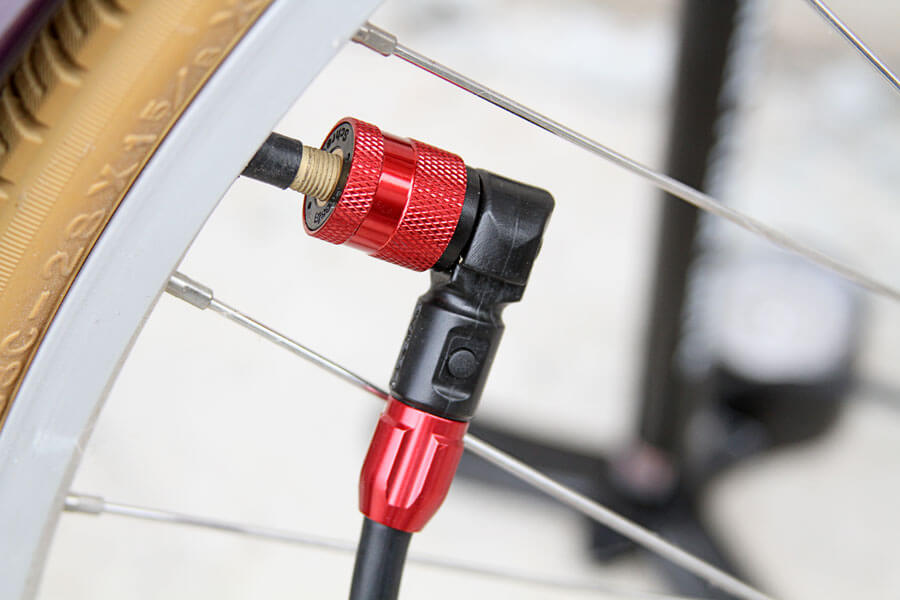
The two most common bike tire valves are Schrader and Presta.
The Schrader valve resembles a car-tire valve and is found mostly in older bikes. It has a wide stem wrapped with rubber where it attaches to the tube. A small pin in the middle of the opening acts as a check valve; when it’s depressed, air is able to flow both in and out. A pump fitted with a Schrader attachment will push the pin down when attached correctly.
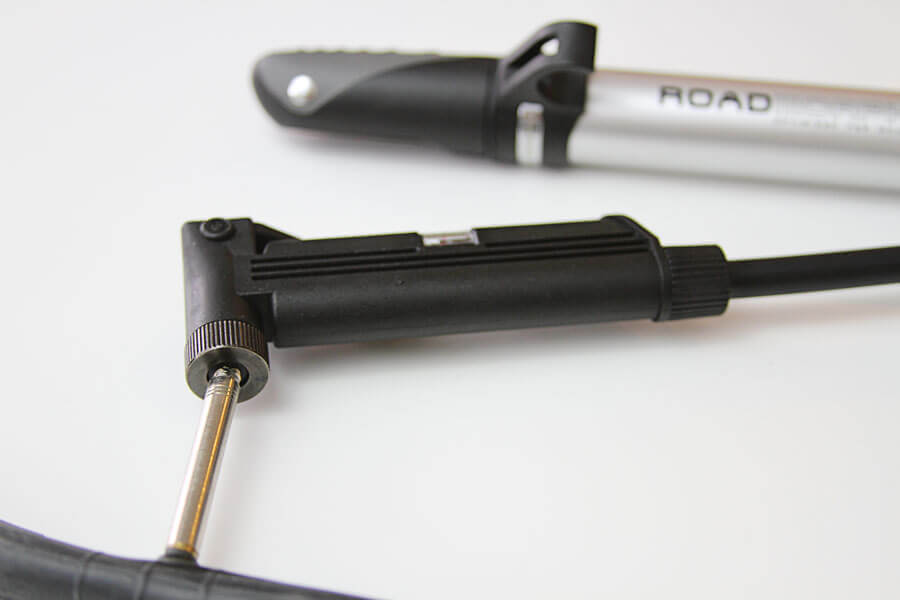
The Presta valve is the new standard in the cycling world, as it tends to hold air longer and more consistently than a Schrader valve. Its stem is longer and thinner and taper almost to a point at the connection tip. At the tip, a small nut — when unthreaded — lets air enter the tire. Unlike the Schraeder, the pressure of the tube itself seals the air inside, negating the need for a check valve.
All of the pumps on our list can accommodate both Schrader and Presta valves, albeit in different ways. The floor pumps offer two separate insertion points, which are relatively easy to identify and use. The tire then locks onto the pump by pulling a lever or screwing onto a nut.
The mini pumps can be a bit trickier. Some require you to rearrange a couple of rubber and plastic components inside the connection point. For example, a small internal stem will protrude enough to access a Schrader valve. For the Presta, you have to turn that piece around and face the thinner side of the rubber washer outward so it securely fits onto the valve.
PSI
Once you’ve determined what kind of valve you have, you need to know what the optimal pounds per square inch (PSI) is for your particular tire. As a general rule of thumb, the thinner the tire the more pressure is required to get the perfect fill.
Road tires, for example, usually perform best when pumped to between 80 and 120 PSI. Hybrid and city bike tires need 50 to 70 PSI, and mountain bike tires should have about 30 to 50 PSI. Less pressure in mountain bike tires is what allows them to conform to different-sized rocks along a trail.
Most tires will have an optimal PSI imprinted somewhere on the tire itself. If not, look up your tire specifications online or ask at your local bike shop.
Gauge
The gauge displays the PSI, which measures the pressure inside your tire as you pump. All floor pumps should have a gauge mounted on or near the base. This gauge should be easy to read and the needle should move steadily and hold its position without wavering.
Design
The look and feel of the pump are also important — not just in terms of aesthetics but for durability as well. A good bike pump should last for many years. The design and materials used to manufacture these products will impact their longevity.
If you’re a regular road-bike rider, no doubt you use a floor pump weekly, and an extra hand pump mounted to the bike frame will be a permanent fixture.
It is less common for hand-held mini pumps to have gauges. Because these pumps are designed for travel, with a small size and low weight, most do not include a way to measure your PSI. There are some with cleverly crafted and unique gauge systems, but most will require the old method of manually feeling the pressure of the tire until you’re satisfied it is firm enough to ride.
The bottom line
Proper bike tire inflation is the best way to ensure a smooth, fast ride and avoid flats. If you own a bicycle, a good bike pump is a necessary investment.
For this 2020 update of our prior review, we’ve selected a new winner as the best floor pump: the Topeak – Joe Blow Sport III. It’s made of aluminum and steel with a padded polymer handle, and it was the fastest to inflate a tire to 80 PSI with a smooth, gliding action that offered virtually no resistance.
Our runner-up floor pump is the Lezyne – Steel Floor Drive. Its extra-long 48-inch hose and unique screw-on valve mechanism make connecting the pump to the tube incredibly easy and secure. The pump’s black polished finish and wooden handle look sharp and feel great.
If you ride often and want to add air to low tires and perform tire changes while out cycling, a mini bike pump is also a wise accessory. For this 2020 update, we chose a new best mini pump, the Lezyne – Micro Floor Drive, which has the same the ABS flip chuck as the floor pump model. This well-designed and beautifully crafted mini pump can hit 80 PSI in less than five minutes.
Our runner-up mini pump, the Topeak – Road Morph G, sports a flip-down foot pedal and attached hose that allow it to function more like a small floor pump than a traditional hand-held travel pump.
More Reviews
Gladiator - Heavy Duty Rack
BLACK+DECKER - BDH2000PL Pivot
Delta Cycle - Michelangelo
Magliner - HMK119UA4
Honda - 21" HRR216K9VKA
The Best Aluminum Can Crushers
Dial Industries - Easy Pull
Wilson - Evolution
The 10 Best Garden & Pruning Shears
Felco - F-2
Chamberlain - B500 Series


